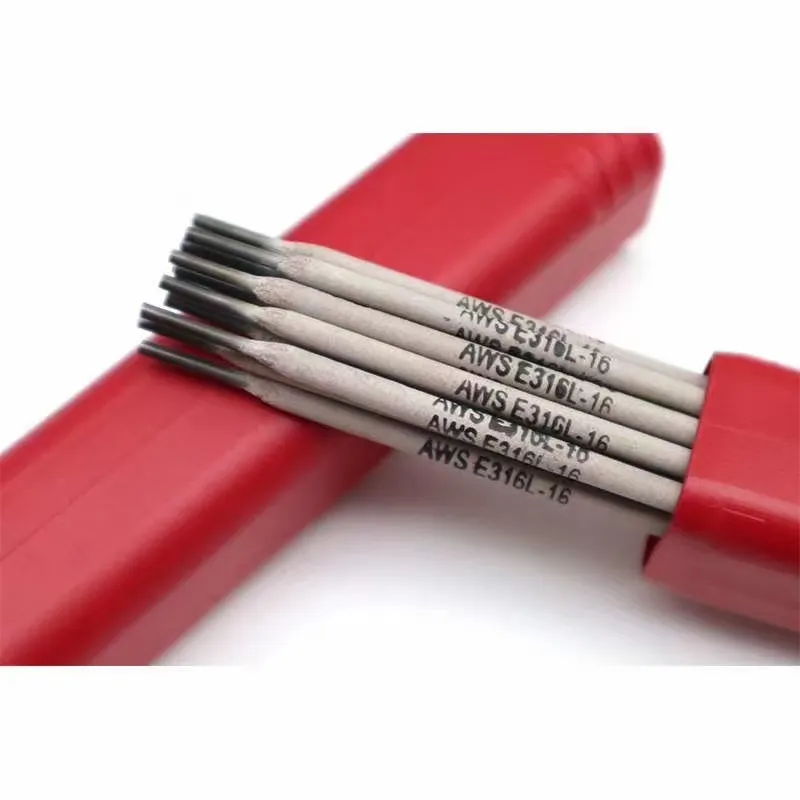Choosing the Best Carbon Steel Electrode for Superior Welding Performance
Apr . 29, 2025 17:24
When it comes to high-efficiency welding, the selection of the right Kohlenstoffstahlelektrode plays a critical role in ensuring strong, durable, and precise welds. Whether for construction, machinery, or structural applications, the right Kohlenstoffstahlelektrode enhances welding efficiency, improves mechanical properties, and ensures optimal bonding strength. With a wide range of options available, including the popular J422 welding rod, understanding carbon steel electrode classification and application is essential.

Types of Carbon Steel Electrode: Understanding the Right Choice for Welding
Selecting the right Kohlenstoffstahlelektrode depends on the specific welding requirements, base material, and working conditions. There are multiple classifications based on composition, coating type, and welding characteristics.
Der J422 welding rod is one of the most commonly used Kohlenstoffstahlelektrode types, known for its excellent welding performance and smooth arc stability. It is primarily designed for low-carbon steel welding applications, offering easy slag removal and good mechanical strength.
Another key aspect of carbon steel electrode classification includes coated electrodes, such as cellulose-coated, rutile-coated, and basic-coated electrodes. Each type is suited for different welding positions and environments. For example, cellulose-coated electrodes are preferred for deep penetration welding, while rutile-coated electrodes offer smooth arc performance and easy slag removal.
Understanding the differences between these electrode types helps welders achieve the best results for specific projects, whether it's structural welding, pipe welding, or general fabrication.
The Specific Application of Carbon Steel Electrode in Welding
Der Kohlenstoffstahlelektrode is widely used in various industrial and construction sectors due to its excellent versatility and cost-effectiveness. Whether for bridges, buildings, pipelines, or heavy machinery, these electrodes provide superior bonding strength and high-performance welds.
Der J422 welding rod is particularly effective for welding mild steel components, offering high deposition efficiency and easy operability. This makes it an ideal choice for shipbuilding, boiler manufacturing, and general structural welding.
Furthermore, carbon steel electrode suppliers offer different variations to suit diverse working conditions, such as moisture-resistant coatings for humid environments and low-hydrogen electrodes for minimizing cracking risks. These specialized electrodes enhance welding performance, reduce defects, and improve overall structural integrity.
How to Evaluate the Welding Performance of Carbon Steel Electrode
Ensuring high welding performance is crucial for achieving strong and reliable welds. Several key factors determine the quality of a Kohlenstoffstahlelektrode, and evaluating these aspects helps in selecting the best option for specific applications.
One of the primary indicators of welding performance is arc stability. A high-quality Kohlenstoffstahlelektrode provides a smooth, stable arc with minimal spatter, ensuring cleaner and more efficient welding. The J422 welding rod, for instance, is well known for its excellent arc control and ease of use.
Another important factor is mechanical strength. The welds created using a superior Kohlenstoffstahlelektrode should exhibit high tensile strength, impact resistance, and ductility to withstand stress and load-bearing conditions.
Additionally, factors such as slag detachability, penetration depth, and resistance to cracking are essential when evaluating the welding performance of Kohlenstoffstahlelektrode. High-quality electrodes ensure minimal porosity, strong fusion, and consistent bead appearance, all of which contribute to enhanced welding quality.
Carbon Steel Electrode FAQs
What are the key benefits of using a Kohlenstoffstahlelektrode for welding?
A Kohlenstoffstahlelektrode provides excellent weld strength, smooth arc performance, and reliable bonding. It is also cost-effective and widely used in various industrial applications.
Why is the J422 welding rod a popular choice for mild steel welding?
Der J422 welding rod offers high arc stability, easy slag removal, and smooth bead formation, making it an ideal choice for mild steel welding in construction and manufacturing industries.
How do I choose the right carbon steel electrode classification for my project?
The selection depends on factors such as welding position, base material, and working environment. Rutile-coated electrodes are best for general-purpose welding, while low-hydrogen electrodes are recommended for high-strength applications.
Where can I find high-quality carbon steel electrode suppliers?
Leading carbon steel electrode suppliers offer a wide range of electrodes designed for different welding needs. Choosing a reputable supplier ensures high-quality products with consistent performance.
What precautions should be taken when storing a Kohlenstoffstahlelektrode?
To maintain quality, Kohlenstoffstahlelektrode should be stored in a dry, temperature-controlled environment. Moisture exposure can lead to electrode deterioration, affecting welding performance.
For superior welding results, selecting the right Kohlenstoffstahlelektrode is crucial. With high-quality options like the J422 welding rod, welders can achieve exceptional durability, efficiency, and structural integrity in every project.
Verwandte Produkte
Ähnliches Video
Weitere News zum Thema




























